Japan is of course a country that is famed for its cuisine. Across the globe, Japanese food is revered for its depth, flavor, and subtlety. Ask anyone from New York to Hong Kong about sushi or ramen and you will no doubt receive an enthusiastic response!
However, for many first-time visitors to the country, Japanese drinks remain something of a mystery. Today, we will look at some of the most famous and unique Japanese drinks that are the perfect complement to any meal.
But, before that...
Sakura Exclusives: FREE E-Book & Cooking Box!
Our Sakura 2025 campaign is running from February 1 to April 30, 2025, and you can get exclusive cherry blossom-themed treats!
Book a restaurant or food tour through us and you'll unlock a free e-book packed with tips for the cherry blossom season.
You'll also be entered into an exclusive prize draw to win a premium Japanese cooking kit, complete with kitchen essentials and a cookbook.
Get your cherry blossom season exclusives!
Popular Japanese tea
Green Tea

Japan is a country where both the traditional and the modern exist in tandem. This is an aspect of the culture that can also be seen even when we look at what people drink in modern Japan. We start with perhaps the most important and famous Japanese drink of all, the humble green tea.
Green tea first originated in China and legend states that the first green tea seeds were brought to Japan by two Buddhist monks, Saicho and Kukai, in the early 9th century. These seeds were then planted in Uji, near Kyoto, which then became the birthplace of Japanese green tea (specifically Uji matcha) in Japan.
Today, there are about 20 different variations of green tea that exist in Japan. The green tea flavor has also become a symbol of the country and can be found in everything from Kit Kats to soap!
However, nothing truly embodies the importance of green tea to Japanese culture more than the traditional tea ceremony, chado (茶道) or "the way of tea." This ritual with Zen Buddhist origins, which uses the matcha tea variation of green tea, has come to represent Japanese culture to the outside world and is all centered around the presentation and enjoyment of the humble beverage.
Browse tea farm tours in Japan.
Hojicha
Hojicha (roasted green tea) is somewhat of an acquired taste. Roasting green tea leaves at a high temperature to create a nutty, toasted flavor that’s instantly recognizable. It isn’t as bitter as some Japanese teas, has a light golden color, and can be a great way to cool down during the hot summer months.
Genmaicha
Genmaicha means “brown rice tea” in Japanese. It consists of green tea mixed with popped brown rice. It has a uniquely nutty, earthy flavor. In the past, it was often drunk by people who were fasting for religious reasons, helping to stave off feelings of hunger between meals.
It was also known as the “people’s tea” since the inclusion of brown rice meant fewer green tea leaves were used in the brewing process, reducing the overall cost of each drink. This was ideal for people of the lower classes of less affluence.
Oolong Tea
Oolong tea, or uroncha, as it’s known in Japan, is another popular type of tea served and sold throughout the country. With its light floral flavor, it is often used as a palate cleanser between dishes or alcoholic beverages to prepare the stomach and taste buds for new flavors to come.
Mugicha
Mugicha, or Japanese barley tea, is another of Japan’s many variations of tea. It is made from roasted barley grains, lending it a roasted flavor with a touch of bitterness.
Although it can be served hot or cold, mugicha has become the unofficial drink of the Japanese summer, served cold to combat the stifling heat.
Kombucha (Kelp Tea)
No, not that kombucha! The Western version that you may be more familiar with is made with a mix of fermented tea, bacteria, and sugar. The Japanese version is entirely different!
Rumored to have made its way from China to Japan in 220 B.C., Japanese kombucha comes from kombu (seaweed or kelp) and cha (tea). Mixing hot water with dried seaweed for a savory, salty drink, this is traditional kombucha.
Seasonal Japanese tea
Cherry blossom tea
One of Japan’s more seasonal teas, sakura cherry blossom tea embraces the pink hues of spring’s famous flower while creating a light, floral taste. The flavor itself may not be life-changing, but drinking a sakura tea while sakura petals fall around you does feel like the ultimate feel-good vibe.
For an experience that's every bit as pretty in pink, join an afternoon tea in Tokyo!
Yuzu tea
Yuzu tea is a winter favorite in Japan. It can be made in several ways. One method is to squeeze the juice of a yuzu into hot water for a calming, citrusy beverage.
Another involves the finely sliced yuzu peel mixed with honey or sugar, a combo that’s hard to beat during the winter. The high levels of vitamin C are an added bonus during this time, too.
Fun fact: Japanese yuzu is actually used in many drinks, dishes, sauces, and even baths in Japan!
Ofukucha (Good Luck Tea)
Here’s one that you might not have tried if you’ve never spent New Year's Day in Japan! Ofukucha, translated as “good luck tea” or “good fortune tea,” is a traditional Japanese tea that’s made with green tea, pickled plum, and dried kelp.
It is drunk at this time of year to attract good luck, health, and prosperity for the year ahead.
Sweet Japanese teas
Royal Milk Tea
In keeping with the different teas of Japan, another unique drink that is very popular amongst Japanese people is Royal Milk Tea. This blend of English tea (black tea, like Assam or Darjeeling) is brewed and then a healthy measure of milk is added.
This can then be sweetened with either milk or honey to taste. This is a drink that can be enjoyed either hot or cold and is a year-round favorite.
Bubble Tea
Originally an imported drink from Taiwan, bubble tea has now become a massive hit, particularly amongst the younger generations. In its original incarnation, this tea is milk tea (not dissimilar to Royal Milk Tea) that can be made with black, oolong, or jasmine tea leaves, with added tapioca balls. The tea is usually served sweetened with sugar.
Check out our blog post 6 Bubble Tea Shops in Tokyo to read more about the bubble tea craze in Japan!
Popular Japanese coffee and coffee types
Coffee
While Japan may be seen by many as the nation of green tea, make no mistake, Japan is also a coffee drinker's paradise. The most popular drink in the world after water, coffee can be found absolutely everywhere in Japan, from convenience stores and vending machines to tiny shops run by coffee purists who sell some of the most expensive and rare coffee beans in the world.
Visitors to Japan should not miss the opportunity to sample a cup of one of Japan’s drip coffees, which is one of the preferred methods of brewing across the country.
To get your caffeine fix, check out these Tokyo cafes and roasteries with killer coffee, or enjoy Japanese coffee anywhere in the world by ordering through byFood's gourmet market!
Canned Coffee
Coffee may have already made an appearance on this list, but canned coffee deserves a spot all of its own. For starters, you’ll find them in all vending machines — chilled in spring and summer, hot in fall and winter — and in all kinds of flavors and strengths, from strong black to creamy and sweet.
Black sesame latte
Black sesame latte is the effortlessly Instagrammable monochrome drink of the moment, combining the rich, nutty flavor of sesame paste with creaminess of milk to create a relaxing, caffeine-free alternative to your usual latte. For first-time drinkers, you may notice a slightly gritty texture, but this becomes part of the charm once you get used to it!
Popular Japanese sodas
Melon Soda
An absolute favorite amongst young Japanese high school students, melon soda is widely available and is a particular treat at karaoke bars and other places where students congregate! For a particularly decadent twist, add a scoop of vanilla ice cream for a melon soda float.
Calpis Soda
Calpis Soda is the carbonated version of the popular Calpis, known as Calpico in other countries. Bringing Calpis’ unique, yogurt-esque flavor to fizzy drinks, this is perfect for those travelers who want to try Calpis but don’t really enjoy still drinks. The bubbles make it feel like an entirely different drink!
C.C Lemon
A fizzy, lemon-flavored drink that’s packed with vitamin C, C.C Lemon is a popular soda available in most vending machines and konbini in Japan, perfect for a refreshing energy boost on your way to your next attraction.

Fun fact: CC Lemon is often associated with The Simpsons as they are featured in many C.C Lemon commercials!
Mitsuya Cider
First sold in Japan in 1884, Mitsuya Cider is a long-standing staple in many Japanese homes. Despite “cider” being in the name, this popular drink is not an alcoholic beverage. With a flavor that’s somewhere between the sweetness of lemonade and the dry aftertaste of soda water, it’s enjoyed over ice or as a mixer in a cocktail.
Japanese Fanta
Much like many countries around the world, Fanta has Japan-specific flavors that you’re sure to miss once you get home. We’re talking Japanese plum, white peach, lychee, Muscat grape, and so many more fizzy flavors worth getting your hands on!
Japan also has Fanta Premier, a more premium version of the classic soda with an extra infusion of fruit juice extract and even fruit rinds, including Fanta Lemon and Fanta Peach.
Ramune
A summer favorite that is available at all matsuri (festivals) and is one of the most uniquely Japanese drinks on this list (despite first being introduced to Japan by a Scottish pharmacist during the Meiji era).
Ramune is a carbonated soda that comes in a variety of different flavors and is served in its distinctly-shaped glass bottle for a refreshing summer treat. Sometimes referred to as "marble soda" abroad, to open this beverage you must push the marble that seals it into the narrow neck of the bottle.
Popular cold drinks in Japan
Calpis
Calpis is a non-carbonated soft drink with a very unique taste (though it is also available as Calpis Soda, the bubbly version). It has a somewhat sweet and milky texture and a light, slightly sour aftertaste, not unlike Yakult. It is a drink that is popular with all age groups and is found throughout the country. Interestingly, Calpis is based on the ancient Mongolian drink airag, which the inventor of Calpis, Kaiun Mishima, tasted during an expedition to Mongolia.
Pocari Sweat
In the summer months, Japan can be punishingly hot and humid, so it is important to stay hydrated! Pocari Sweat is the drink (with a somewhat off-putting name) that will help you do just that! Strange name aside, Pocari Sweat is in fact a non-carbonated isotonic sports drink that contains important minerals and electrolytes that keep you hydrated and well-supplied with nutrients. The drink is available in convenience stores across Japan and is a favorite with athletes and sports teams.
Aquarius
A must-have during Japan’s summer months, and really any time you plan to exert yourself, Aquarius is up there with Pocari Sweat as the go-to hydration for replacing the minerals lost when sweating. It’s low calorie, includes amino acid and citric acid — both important for retaining muscle during exercise — and has a subtle, sweet flavor that most people can enjoy.
Qoo!
Named after the “the sound of satisfaction a grown-up makes when they down a glass of beer,” Qoo! is a fruity kids drink with cute packaging and a wide range of flavors, including orange, apple, and white grape juices.
They also offer drinkable jellies in grape, peach, mikan, muscat grape, and apple flavors.
Flavored Soy Milk
Soy milk, a natural ingredient of tofu that's made by grinding soybeans, has long been an alternative to dairy milk in Japan. It is a beverage that again holds a place of special importance in Japanese cuisine, and is used to make yuba (the skin that forms atop boiled soy milk).
It is also used as the base for a special winter stew called tonyu nabe (soy milk hotpot). However, in recent years the popularity of soy milk as a stand-alone beverage has soared with many flavored options such as banana, sakura, and of course matcha!
There are even limited-edition flavors such as pudding-flavored soy milk.
Popular hot drinks in Japan
Hot chocolate
Of course, you can get hot chocolate in almost every country in the world, and Japan is no different. What is different, however, is that you can get warm hot chocolate at vending machines and konbini (convenience stores) during the winter — perfect for warming up in a more indulgent way.
As always, Japan has a way of taking things to the next level, so you’ll also find specialty hot chocolates across the country. Here are the best hot chocolate spots in Tokyo, should you be searching the capital for a touch of hot chocolate extravagance.
Amazake
Amazake is perhaps the most unique drink on this list and has one of the longest histories. This sweet drink is made with fermented rice, and it can be alcoholic or non-alcoholic. Sometimes it is made with the sake kasu that's left over from the Japanese sake brewing process, giving it a delicious tang.
It can be served either hot or cold but is more traditionally enjoyed hot in winter to warm up holiday revelers through on chilly evenings. This drink is also a traditional Japanese New Year's beverage that is offered at temples and shrines during hatsumode.
Learn more about hatsumode and oshogatsu in our article about Japanese New Year traditions!
Popular vitamin drinks in Japan
On-the-go vitamin drinks
There are all kinds of vitamin drinks on the shelves at every konbini, ranging from vitamin C-packed lemon drinks to fiber-filled grapefruit and so much more.
Whether you want to wake up, calm down, boost your immune system, or even prevent a hangover from drinking that night, they’ve got you covered.
inJelly drinkable jelly
Similar to Japan’s bountiful vitamin drinks, there are shelves of drinkable energy jellies with similar effects, including increasing energy, fiber, multi-vitamins and more!
Unique Japanese drinks
Limited-edition Coca Cola
One such example of a limited-edition Coke in Japan is the K-Wave version. Released as part of a competition to win tickets to the "K-Wave Concert in Korea," it had a gentle, fruity flavor that offered a fun alternative to the usual Coke Zero.
While this specific Coke was released as part of a K-pop-related competition, Japan is no stranger to the unique side of cola. Previously released flavors include Vanilla Float, Clear Lime, Coca Cola Plus — which included 5g of fiber in order to earn its government-given title of a “Food of Specified Health Use” — and so many more.
Seasonal exclusive Starbucks
All countries enjoy seasonally exclusive Starbucks drinks (and merch!), but Japan really takes the sakura-flavored cake! From cherry blossom flavors and styles in the spring to summer-inspired melon frappes and festive options in the winter, there’s always something new to drink or add to your mug collection.
Aloe Drinks
Okinawa is famous for many different tropical fruits and vegetables. Perhaps one of the best known is its aloe vera plant, which is cultivated year-round.
The plant contains over 200 active compounds and vitamins and is acknowledged by the people of Okinawa as one of their secrets to long life! Aloe vera juice and aloe yogurt drinks are now among the most popular drinks in Japan and are widely available.
Yoghurt drinks in Japan
Yakult
Today a drink that is famous the world over, this probiotic, fermented milk beverage was first invented by the renowned Japanese scientist, Dr. Minoru Shirota in 1935.
This small but mighty drink has been scientifically proven to help maintain a healthy stomach and increase the good bacteria in your system.
Yakult is so popular in Japan that not only does it come in different flavors, but it is delivered from door-to-door and to offices each day and it even has a baseball team (the Yakult Swallows) named after it!
Popular alcoholic Japanese beverages
Japanese Sake (Nihonshu)
The grandfather of Japanese alcoholic drinks, nihonshu, or sake as it is known outside Japan, is a rice wine that is made from rice, rice koji, and water. It is believed that sake is the oldest alcoholic drink in Japan and there is evidence of sake consumption dating back to the third century!
This is a drink that can be served cold in summer and hot in winter and certainly should not be missed by any visitor to Japan.
Sake has a huge number of different varieties and regional specialties. You can also find a great number of specialty sake bars that will give you the opportunity to try a wide variety.
The best way to try sake and get to know your preferences is during a sake tasting! Browse Japanese sake tastings in Japan!
Japanese Craft Beer

Much like the growth of Japanese whisky, Japanese craft beer has also experienced a real boom in recent years. There are now many different craft beer pubs dotted around the country that offer some fantastic Japanese interpretations of beers such as IPAs and stouts but also some truly unique Japanese flavors such as beers brewed with sakura or yuzu!
Read all about the must-try beer in Japan in our Japanese beer guide.
Japanese Whisky
In 2014, the world of whisky experienced a shock when, for the first time in history, a Scottish whisky was defeated and a Japanese whisky was named the best in the world. Japan takes its whisky very seriously indeed and this can be seen with the wide and varied selection of local brands available.
For those who are very interested in the process, the major Japanese distilleries also offer guided tours and sampling!
Umeshu
Umeshu or Japanese plum wine, is a sweet, plum-flavored liqueur with a rich taste and a honey-colored look. This alcoholic favorite can be drunk straight but is also delicious when mixed with soda water or even with a splash of water.

You can even make it yourself with the right tools, ingredients and a little patience.
Shochu
A staple of the izakaya, shochu is a clear alcoholic drink that can be distilled from a variety of ingredients such as sweet potatoes, barley, or rice. Regional variations of shochu can be drunk all over Japan and this is a very popular drink amongst salarymen and women during work parties.
Momoshu (Peach Wine)
If you want to try one of Japan’s fruity wines without the sour afterness of some plum wines, momoshu peach wine is for you. With its natural sweetness and peachy flavors, it’s delightfully refreshing and doesn’t taste too strong of alcohol.
Yuzushu (Yuzu Wine)
On the other end of the spectrum, yuzushu is yuzu wine, a tangy, slightly sour drink that makes the most of Japan’s citrus fruit! Said to bring out the flavors of sashimi and seafood dishes, this is one for pairing with Japan’s wealth of omakase sushi menus and fresh seafood.
Awamori
A local specialty of Okinawa, Japan's southernmost point, this alcoholic beverage is believed to be one of the oldest distilled drinks in the country. The process involves malting Thai rice until koji — a type of black mold — is created, followed by adding water and yeast before fermenting and distilling.
Due to the temperature and climate conditions required for this process, Okinawa is one of the only places to craft this drink, said to have sweet notes of vanilla and caramel.
Popular Japanese cocktails
Cassis orange
Cassis orange is a popular choice with the izakaya crowd, offering an easy-drinking alcoholic beverage of Cassis liqueur and orange juice. As you might expect, it mostly tastes like orange juice and is a hit with drinkers who prefer a sweeter option.
Chuhai
The university and college students’ drink of choice, chuhai is a combination of shochu and a sweet, flavored soda. The most popular variant of the chu-hai is lemon flavor but there are tens of different flavors available. Chuhai is readily available in all convenience stores but a tastier and more refined variation of the drink can be found in many izakaya and bars where fresh fruit is mixed in.
Lemon sour
Another go-to alcoholic beverage for many the lemon sour is a mix of shochu, soda water, and lemon juice. You’ll find this cocktail on pretty much every izakaya menu, along with canned variations at konbini and supermarkets across the country. Refreshing, tangy, and a little bitter!
Tokyo Mule
Adding their own twist on the classic mule, the Tokyo mule blends Japanese alcohol with some form of ginger — ginger ale, syrup, or ground ginger — and the juice of yuzu or lime. If you love ginger ale, you’re going to love this one.
Peach Oolong
Similar to Cassis orange, peach oolong is another alcoholic beverage that’s favored by drinkers with a sweet tooth. Mixing peach liqueur with oolong tea, it is both refreshing and dangerously drinkable. This is one of the stars of the nomihodai all-you-can-drink menu for many.
Ochawari
Ending this list with a couple lesser-known drinks, there’s ochawari, combining shochu with green tea. It’s decidedly Japanese by its very nature and only tends to be 4% ABV, making it a refreshing option for balmy summer nights.
Shikuwasa sour
Taking you back to Okinawa with this specialty, the shikuwasa sour uses the shikuwasa lime to make a strong, citrus-y beverage. It can be mixed with a sweetener like sugar or honey to create a tangy limeade, or it can be blended with the Okinawan awamori alcohol mentioned earlier for a unique cocktail you may not find elsewhere!
Canned alcoholic beverages in Japan
Horoyoi
Horoyoi is the canned alcoholic drinks range that keeps on giving, regularly releasing brand-new flavors that suit the season, from grape and peach to Happicle, a nostalgic throwback to an Asian yogurt drink similar to Yakult.
There’s always a new flavor to try, all of which are only 3% ABV, and they tend to lean towards the sweeter side.
Strong Zero
Strong Zero is Horoyoi for those who want to taste the alcohol. It’s sold at 9% ABV and tends to have a much smaller range of slightly sour, bitter flavors, including lemon and lime.
All in all, Japan has a huge variety of different, unique, and wonderful drinks to try. Many of these can be seasonal and completely unique to the region, meaning that for the visitor, there is an endless galaxy of flavors to experience!
Expand your palate. Browse tastings in Japan and become an expert on Japanese sake, whisky, tea, and more! Or, for another deep dive into Japanese food culture, check out these popular Japanese snacks.
Here’s the extensive Japanese drinks list…
Here is the complete list of every popular Japanese drink mentioned in this article, giving to a list of drinks to tick off on your journey across Japan:
- Green Tea
- Royal Milk Tea
- Bubble Tea
- Flavored Soy Milk
- Yakult
- Aloe Drinks
- Melon Soda
- Calpis
- Calpis Soda
- Pocari Sweat
- Ramune
- Amazake
- Coffee
- Canned coffee
- Hot chocolate
- Hojicha (roasted green tea)
- Genmaicha (brown rice tea)
- Black sesame latte
- Limited-edition Coca Cola
- Aquarius
- Mugicha (Japanese barley tea)
- Qoo!
- Oolong Tea
- Cherry Blossom Tea
- Yuzu Tea
- Ofukucha (Good luck tea)
- Vitamin Drinks
- InJelly drinkable jelly
- CC Lemon
- Kombucha (Kelp Tea)
- Mitsuya Cider
- Japanese Fanta
- Seasonal exclusive Starbucks
- Japanese Sake (Nihonshu)
- Japanese Craft Beer
- Japanese Whisky
- Umeshu
- Shochu
- Chuhai
- Momoshu (Peach Wine)
- Yuzushu (Yuzu Wine)
- Awamori
- Cassis orange
- Lemon sour
- Tokyo Mule
- Peach oolong
- Horoyoi
- Strong Zero
- Ochawari
- Shikuwasa sour
 Tokyo
Tokyo Osaka
Osaka Kyoto
Kyoto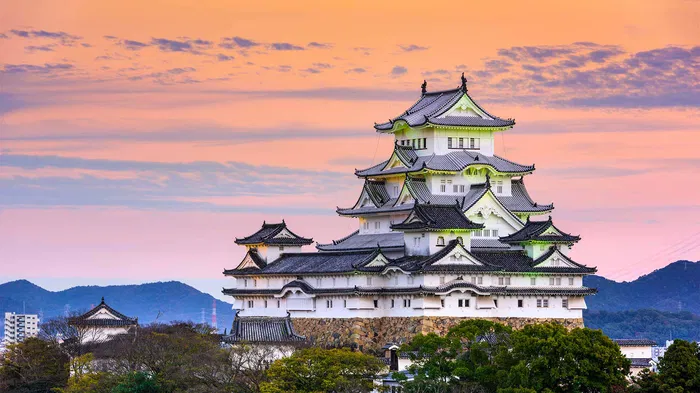 Hyogo
Hyogo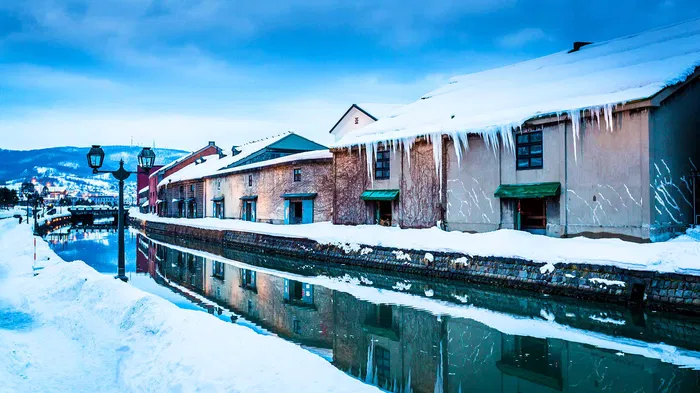 Hokkaido
Hokkaido Nara
Nara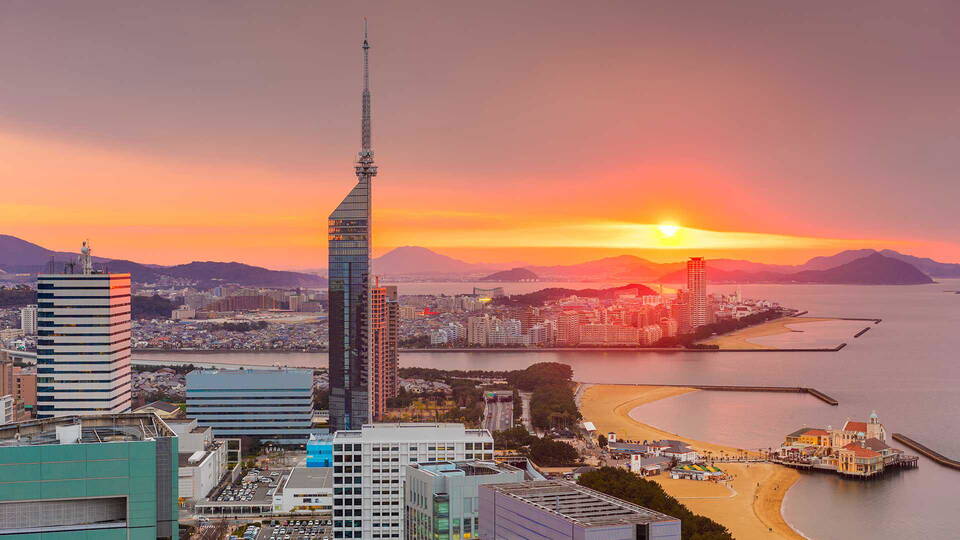 Fukuoka
Fukuoka Hiroshima
Hiroshima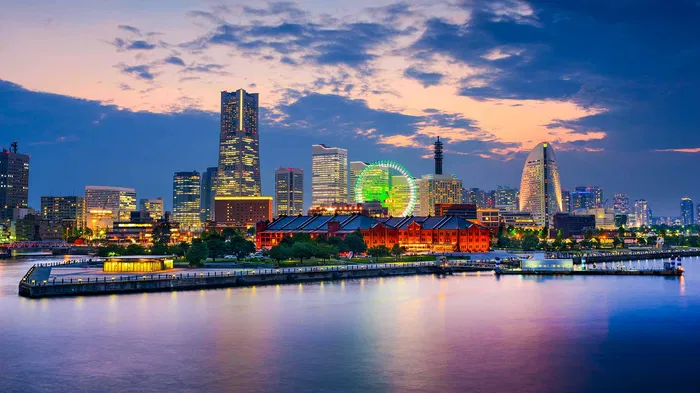 Kanagawa
Kanagawa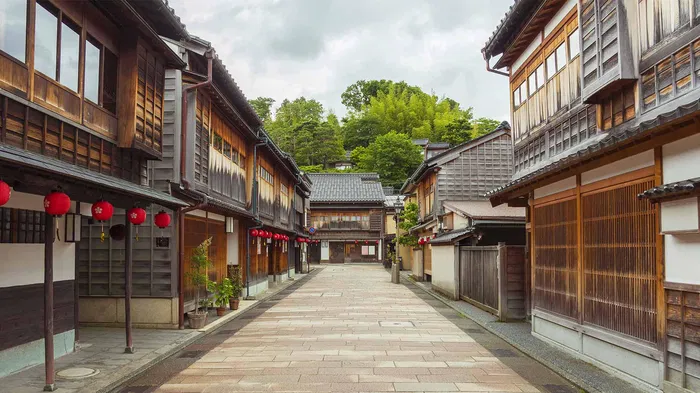 Ishikawa
Ishikawa Florence
Florence Paris
Paris Rome
Rome Porto
Porto Barcelona
Barcelona New York
New York Venice
Venice Madrid
Madrid Marrakesh
Marrakesh Istanbul
Istanbul